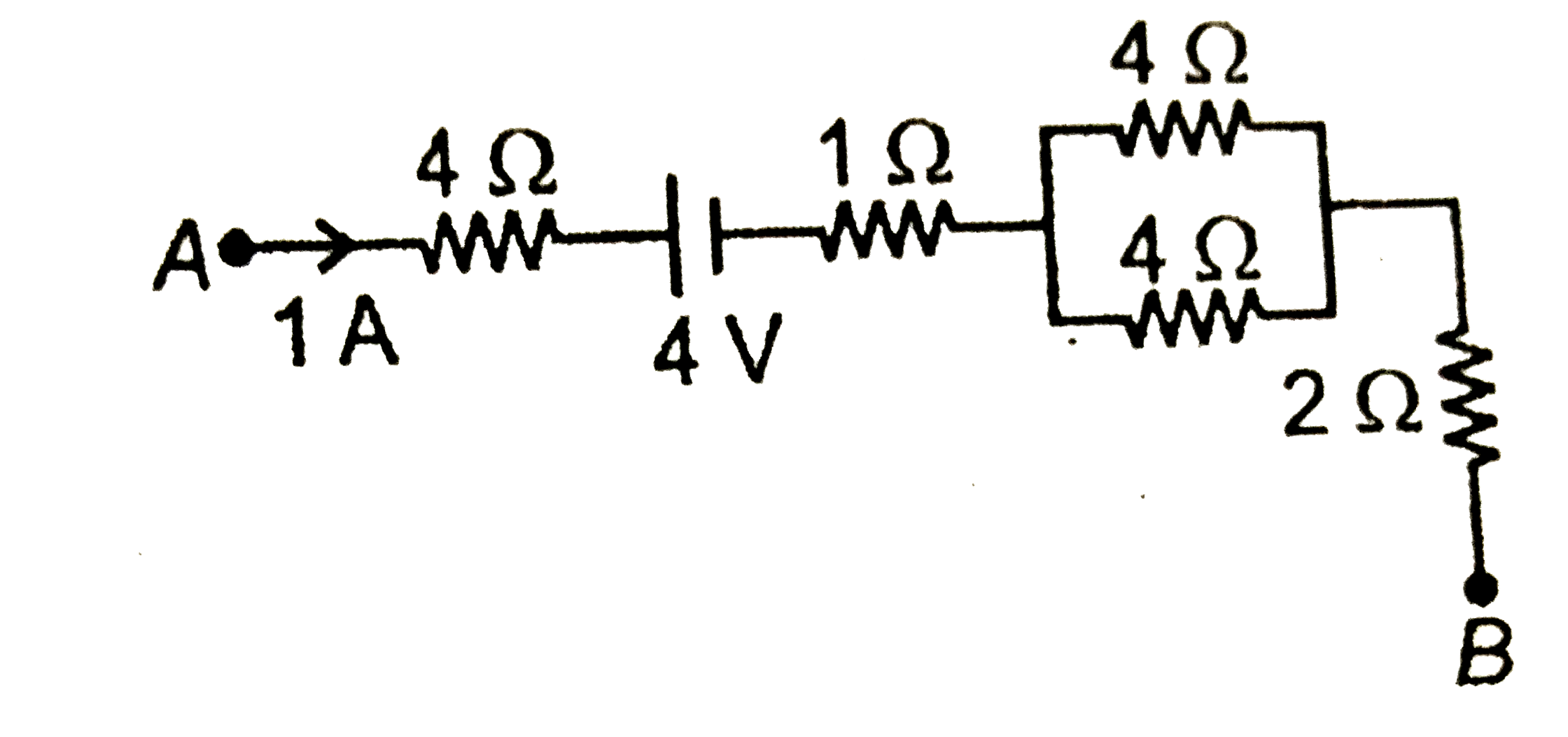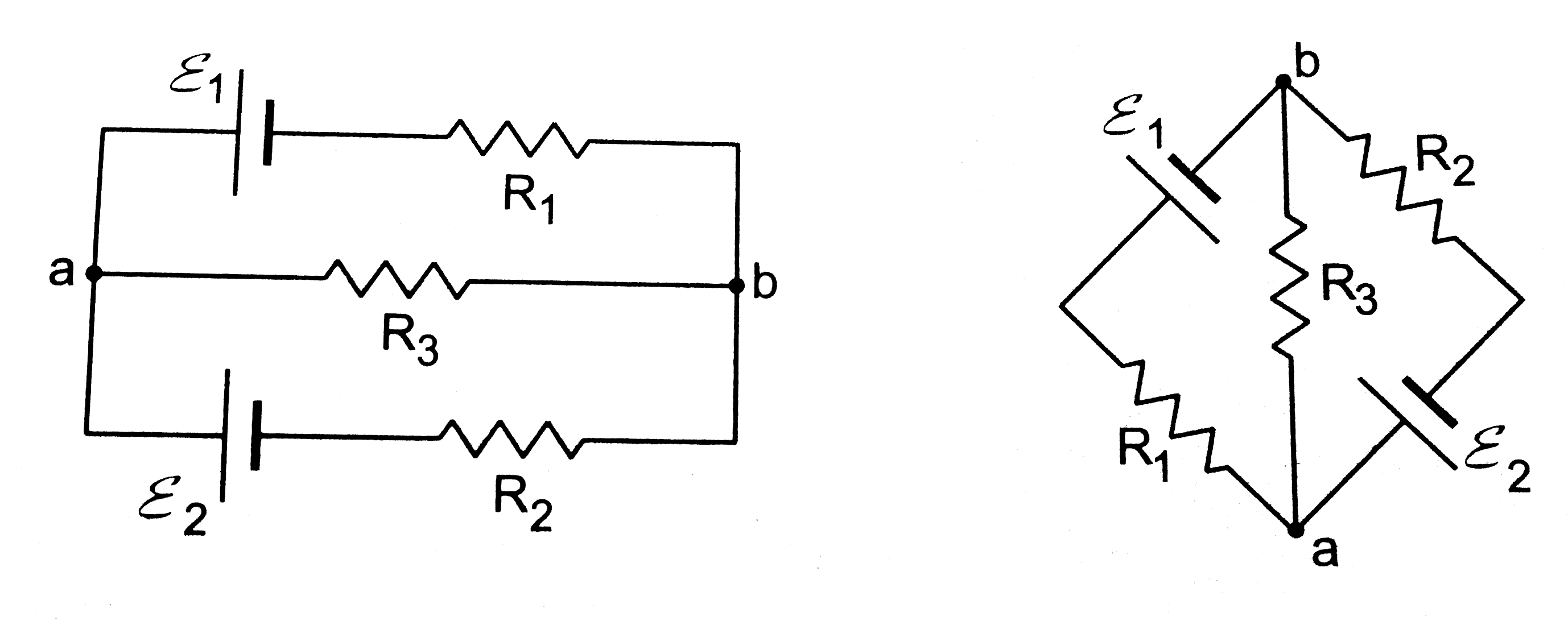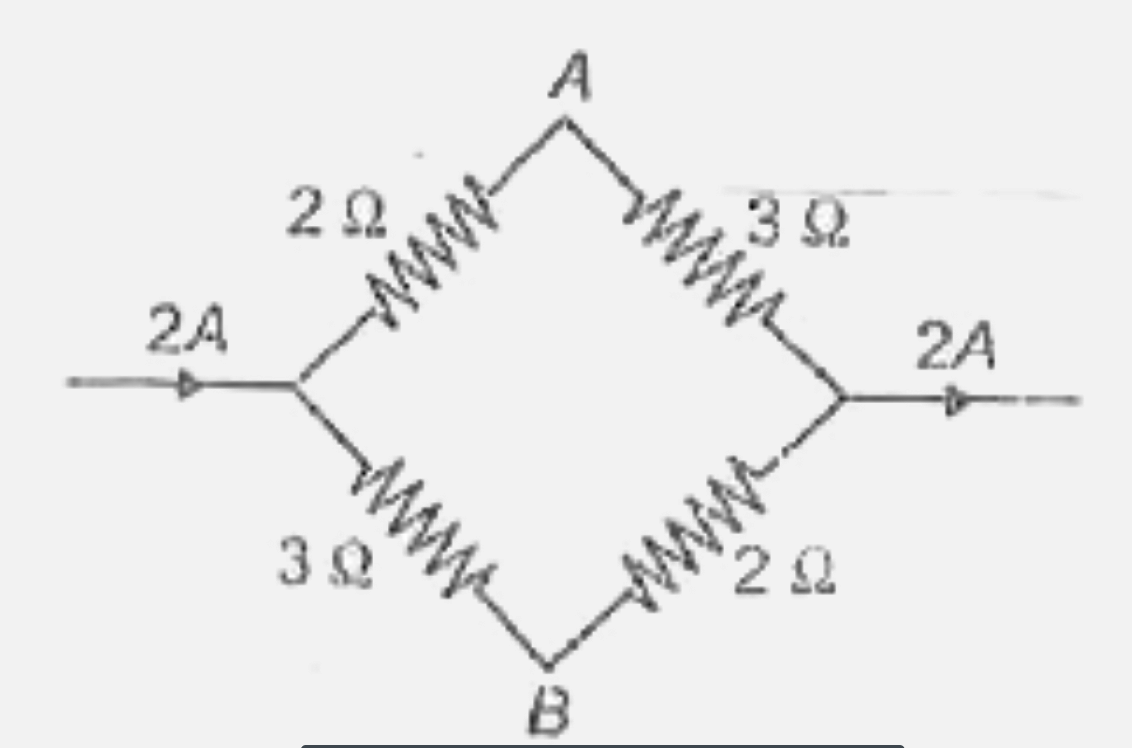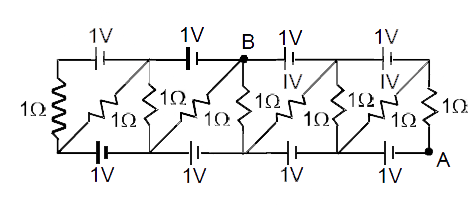The potential difference (VA−VB) in the arrangement shown in the figure is (q=1μC,x=2cm,y=3cm)

A
5.4×105V
B
2.7×105V
C
5.4×102V
D
2.7×102V
Text Solution
The correct Answer is:A
An arrangement is shown in the figure below,

Here, potential at a point A,
VA=VA+4+VA−4
=9×109×10−62×10−2−9×109×10−65×10−5=9×105[12−15]
Similarly, potential at a point B,
VB=VB+q+VB−q=9×105[15−12]
Hence, VA−VB=9×105[12−15−15+12]
⇒VA−VB=5.4×105V
Hence, the correct option is (a).
|
Topper's Solved these Questions
- AP EAMCET SOLVED PAPER 2018 ( 23-04-2019,SHIFT -1)Book:TS EAMCET PREVIOUS YEAR PAPERSChapter:AP EAMCET SOLVED PAPER 2018 ( 23-04-2019,SHIFT -1)Exercise:Physics
Explore 40 Videos
- AP EAMCET SOLVED PAPER 2019 (22-04-2019, SHIFT-2)Book:TS EAMCET PREVIOUS YEAR PAPERSChapter:AP EAMCET SOLVED PAPER 2019 (22-04-2019, SHIFT-2)Exercise:PHYSICS
Explore 40 Videos
Similar Questions
Knowledge Check
The potential difference (VA−VB) between the point A and B as shown in the figure is
 A9VB8VC15VD13V
A9VB8VC15VD13VThe potential difference (VA−VB) between the point A and B in the given figure is
 A+6VB+9VC−3VD+3V
A+6VB+9VC−3VD+3VThe potential difference (VA−VB) between the point A and B in the given figure is :
 A+6VB+9VC−3VD−8V
A+6VB+9VC−3VD−8V
The potential difference (VA−VB) between the point A and B in the given figure is

View SolutionThe potential difference (VA−VB) between the point A and B in the given figure is

View SolutionThe potential difference (VA−VB) between the point A and B in the given figure is :

View SolutionFind the potential difference Va−Vbin the circutis shown in figure

View SolutionFind the potential difference Va−Vbin the circutis shown in figure

View Solution


